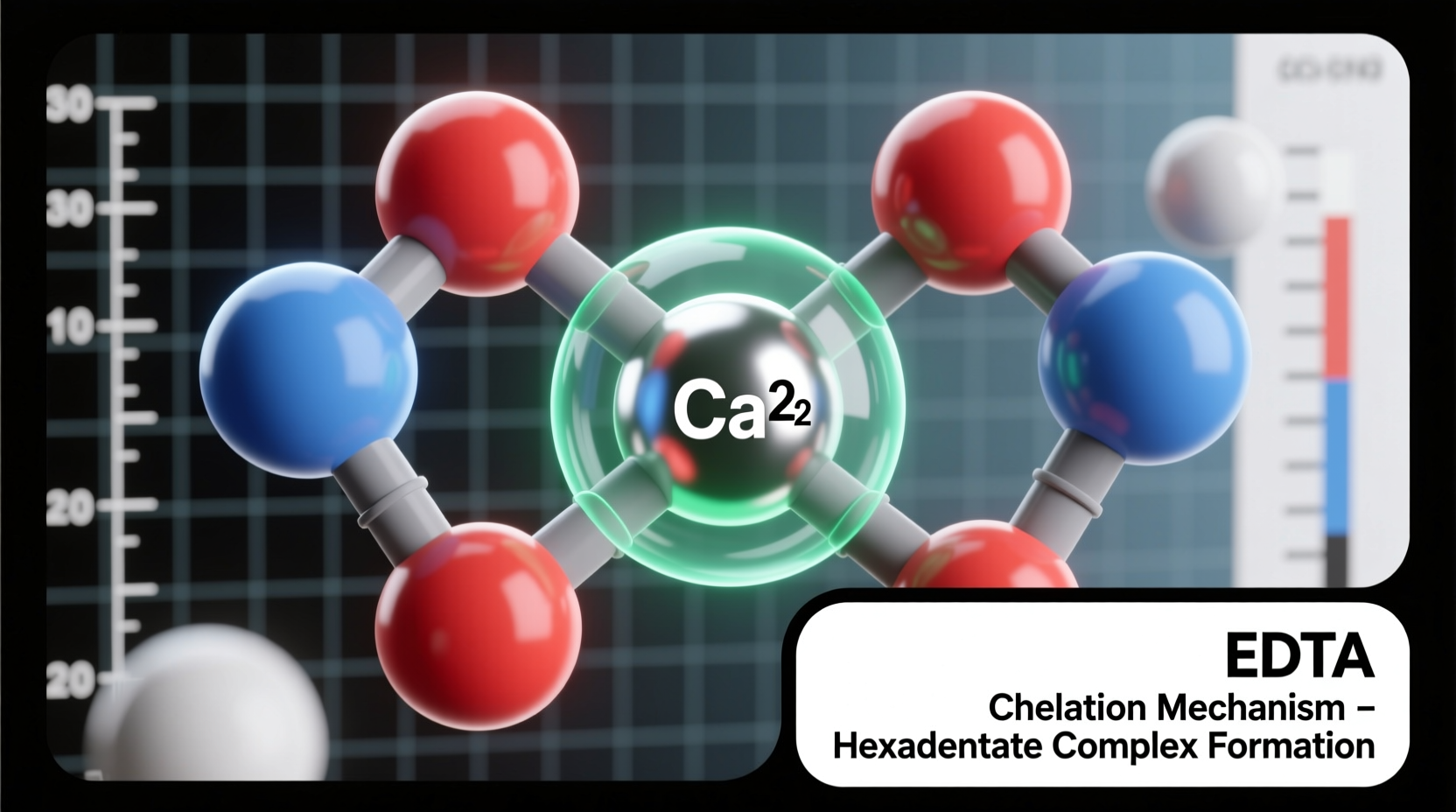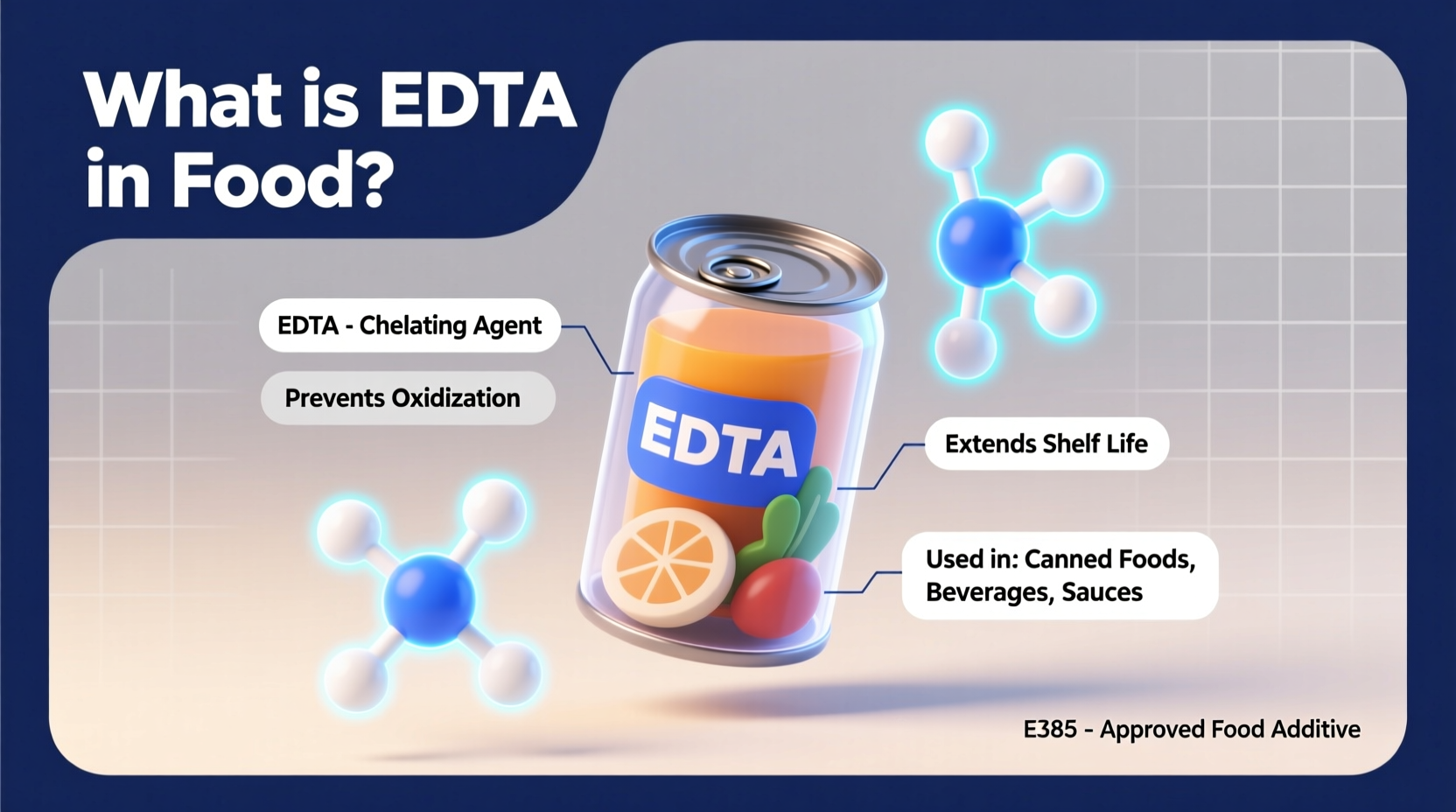Understanding EDTA: The Food Preserver You've Likely Consumed Today
If you've eaten packaged food recently, you've probably consumed EDTA without realizing it. This unassuming additive plays a crucial role in maintaining the quality, appearance, and shelf life of countless products lining supermarket shelves. But what exactly is EDTA in food, and should you be concerned about it?
Ethylenediaminetetraacetic acid (EDTA) is a synthetic amino acid compound approved as a food additive worldwide. Unlike controversial preservatives that make headlines, EDTA works quietly behind the scenes to preserve food quality through a process called chelation—binding metal ions that would otherwise trigger spoilage reactions.
How EDTA Actually Works in Your Food
Imagine tiny metal particles acting like invisible saboteurs in your food. Iron from processing equipment or naturally occurring copper can react with oxygen, causing colors to fade, flavors to turn rancid, and nutrients to break down. EDTA functions as a "molecular handcuff," surrounding these metal ions and preventing them from catalyzing destructive reactions.
This chelating action makes EDTA particularly valuable for:
- Preventing browning in canned fruits and vegetables
- Maintaining color in salad dressings and mayonnaise
- Extending shelf life of carbonated beverages
- Preserving flavor in processed meats
- Stabilizing vitamin content in fortified foods

Global Regulatory Status of Food-Grade EDTA
Food safety authorities worldwide have extensively evaluated EDTA. The following table shows its approved status across major regulatory bodies:
| Regulatory Authority | Status | Maximum Allowable Levels | Common Food Applications |
|---|---|---|---|
| U.S. FDA | Generally Recognized as Safe (GRAS) | 100-750 mg/kg depending on food type | Salad dressings, canned goods, beverages |
| European EFSA | Approved (E385) | 10-750 mg/kg depending on food category | Mayonnaise, processed meats, soft drinks |
| Joint FAO/WHO Expert Committee | Acceptable | Established ADI of 2.5 mg/kg body weight | Global food standards |
EDTA's Journey: From Medical Discovery to Kitchen Staple
Understanding the evolution of EDTA provides context for its current food applications:
- 1935: First synthesized by Ferdinand Münz while developing amino carboxylic acids
- 1940s: Initially used medically as an antidote for heavy metal poisoning
- 1953: FDA approved for limited food use in canned shellfish to prevent "black spot"
- 1960s-1970s: Expanded applications in beverages and dressings as food processing industrialized
- 1990s: EFSA establishes first comprehensive safety evaluation
- 2010: Joint FAO/WHO committee confirms safety with established Acceptable Daily Intake
- Present: Used in over 2,000 food products globally with no significant safety concerns reported
Where You'll Find EDTA in Your Pantry
EDTA appears in more foods than you might expect. When checking ingredient labels, look for:
- Ethylenediaminetetraacetic acid
- EDTA
- Sodium calcium EDTA
- Calcium disodium EDTA
- E385 (in European products)
Common products containing EDTA include:
- Mayonnaise and salad dressings (prevents iron-induced discoloration)
- Canned fruits and vegetables (maintains color and texture)
- Carbonated soft drinks (stabilizes flavor and color)
- Processed meats (prevents oxidation of fats)
- Dry beverage mixes (preserves vitamin content)
- Medical foods and nutritional supplements
Addressing Common Concerns About EDTA Safety
Despite its long history of safe use, some consumers express concerns about EDTA. Let's examine the evidence:
Health Impact Assessment
According to the U.S. Food and Drug Administration, EDTA has been designated Generally Recognized As Safe (GRAS) since 1958. The European Food Safety Authority (EFSA) conducted a comprehensive re-evaluation in 2014, confirming:
"The Panel concluded that there is no need for a numerical ADI for EDTA (E 385) and that the proposed uses of EDTA (E 385) at the proposed use levels are not of safety concern." EFSA Journal 2014;12(2):3552
The Acceptable Daily Intake (ADI) established by the Joint FAO/WHO Expert Committee on Food Additives is 2.5 mg per kilogram of body weight. For a 150-pound adult, this translates to approximately 170 mg daily—far higher than typical consumption levels.
Environmental Considerations
While EDTA is safe for human consumption, its environmental persistence has prompted some manufacturers to explore alternatives for non-food applications. However, food-grade EDTA represents a tiny fraction of total EDTA production, and regulatory bodies continue to affirm its safety profile for food use.
Practical Guidance for Consumers
Based on current scientific understanding, here's what consumers should know about EDTA in food:
- No need for avoidance: For the general population, EDTA in food at approved levels poses no health risk
- Special considerations: Individuals with severe kidney impairment may want to consult their physician about high-EDTA diets
- Reading labels: If you prefer to avoid EDTA, check ingredient lists for the terms mentioned earlier
- Context matters: The small amounts used in food (typically 0.01-0.1%) serve important quality preservation functions
- Natural alternatives: Some manufacturers use citric acid or ascorbic acid as chelators, though they're less effective in certain applications
When EDTA Makes the Difference Between Fresh and Spoiled
Not all foods benefit equally from EDTA. Its effectiveness depends on specific conditions:
- Ideal for: Acidic foods (pH below 4.5), products containing metal catalysts, foods requiring long shelf life
- Less effective for: High-temperature processed foods, alkaline products, items already containing strong natural chelators
- Not needed for: Fresh, unprocessed foods, products with very short shelf life
- Superior to alternatives: When precise metal control is needed in complex food matrices
Understanding these context boundaries helps explain why food scientists select EDTA for specific applications while using other preservatives elsewhere.
Looking Ahead: EDTA in Modern Food Systems
As consumer demand for clean labels grows, food manufacturers continue evaluating all additives, including EDTA. However, its unique functionality means complete replacement remains challenging for many applications. Current research focuses on:
- Optimizing minimal effective doses
- Developing targeted delivery systems
- Creating hybrid preservation systems that reduce overall additive needs
- Improving biodegradability while maintaining food safety functions
For now, EDTA remains an important tool in the food scientist's toolkit, helping deliver safe, appealing, and nutritious products to consumers worldwide.











 浙公网安备
33010002000092号
浙公网安备
33010002000092号 浙B2-20120091-4
浙B2-20120091-4